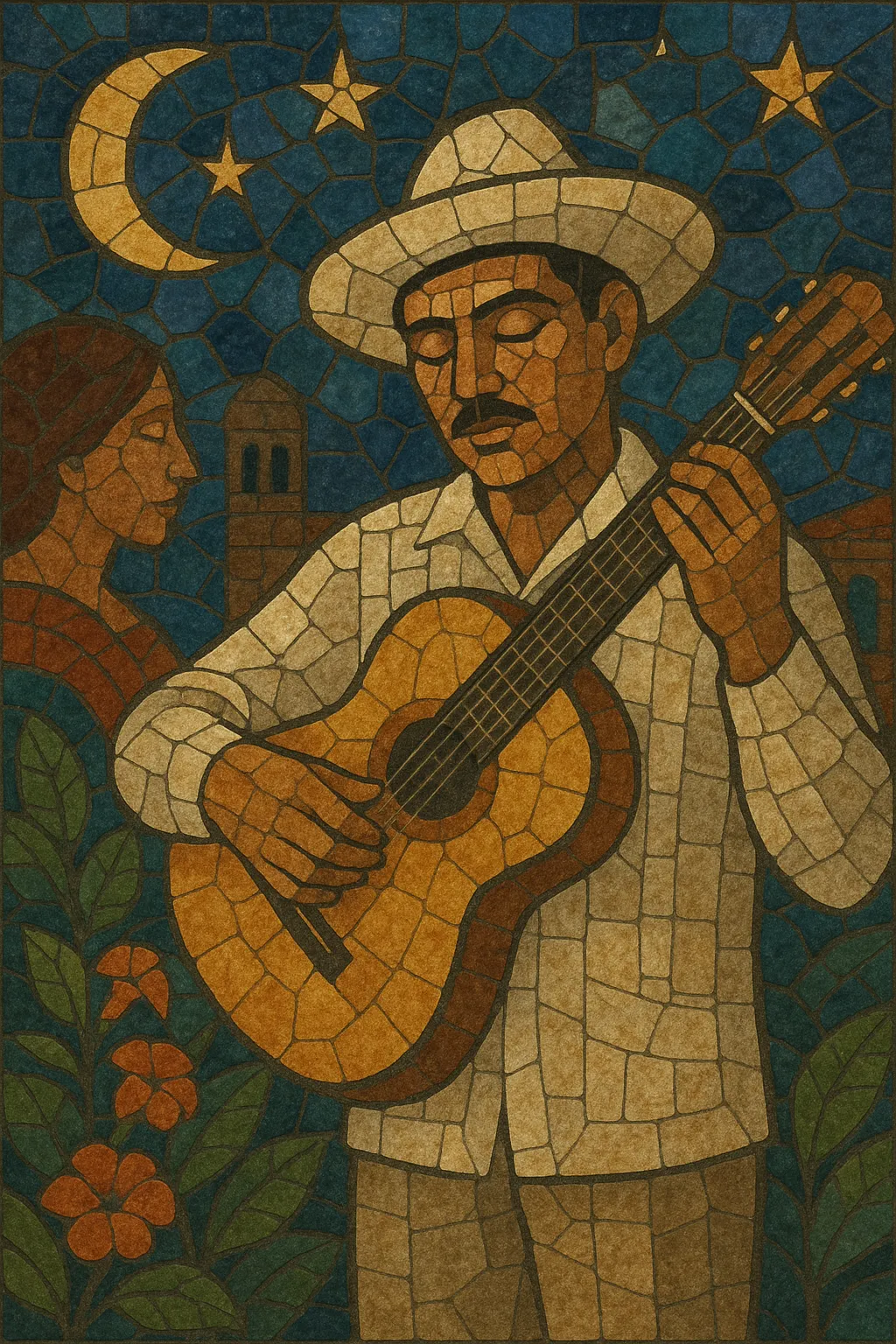Trova yucateca is a romantic song tradition from the Yucatán Peninsula in Mexico, centered in Mérida and performed primarily by voice and guitar ensembles. It blends poetic Spanish-language lyrics with refined melodies and harmonies, often presented as serenades in plazas or intimate salons.
Musically, it draws on Cuban trova and habanera rhythms, European salon forms such as the waltz, and local Yucatecan/Maya sensibilities. The result is a lyrical, tender repertoire marked by elegant guitar accompaniment, careful vocal phrasing, and themes of love, longing, and regional imagery.
Trova yucateca emerged in Mérida in the late 1800s as a cultivated song style performed by trovadores with guitar and voice. The port links between Yucatán and Havana facilitated a strong Cuban presence in the region’s musical life, bringing the habanera, early bolero, and the Cuban trova ethos to local musicians, who adapted these influences to their own poetic and melodic inclinations.
Cirilo Baqueiro Prevé “Chan Cil” is often cited as a formative figure who helped codify local practice through teaching and composition, setting the stage for a new Yucatecan art song idiom that balanced imported rhythms with regional aesthetics.
The style flourished in the early 20th century through composers and singer-guitarists such as Ricardo Palmerín, Pepe Domínguez, and especially Guty Cárdenas, who popularized Yucatecan songs nationally and abroad. Their pieces—at once harmonically nuanced and melodically expressive—became staples of serenades, theaters, and recordings, helping to define the romantic identity of the Yucatán songbook.
During this period, trova yucateca repertoire crystallized: strophic forms with poetic verses; tender, often bittersweet themes; and guitar textures that combined arpeggios, bolero-like syncopations, and subtle chromaticism.
As radio and records expanded Mexican popular music, Yucatecan songs became part of the broader national canon. In 1942, the Orquesta Típica Yukalpetén was founded to preserve and disseminate Yucatecan repertoire through carefully crafted arrangements, ensuring that trova yucateca would be heard in concert halls as well as in plazas.
Lyricists such as Luis Rosado Vega collaborated with composers, reinforcing the genre’s literary quality. Even as other Mexican styles surged, trova yucateca remained a touchstone for elegance and sentiment.
Weekly serenades in Mérida’s Santa Lucía park and dedicated ensembles kept the tradition visible. Later Yucatecan songwriters—among them Pastor Cervera, and, in a broader sense, figures like Armando Manzanero—absorbed its language of harmony and tenderness.
Trova yucateca’s legacy endures in Mexico’s singer-songwriter culture and in Latin American romantic songcraft more broadly, where its refined guitar idioms, poetic diction, and serenade practice continue to inspire new generations.


